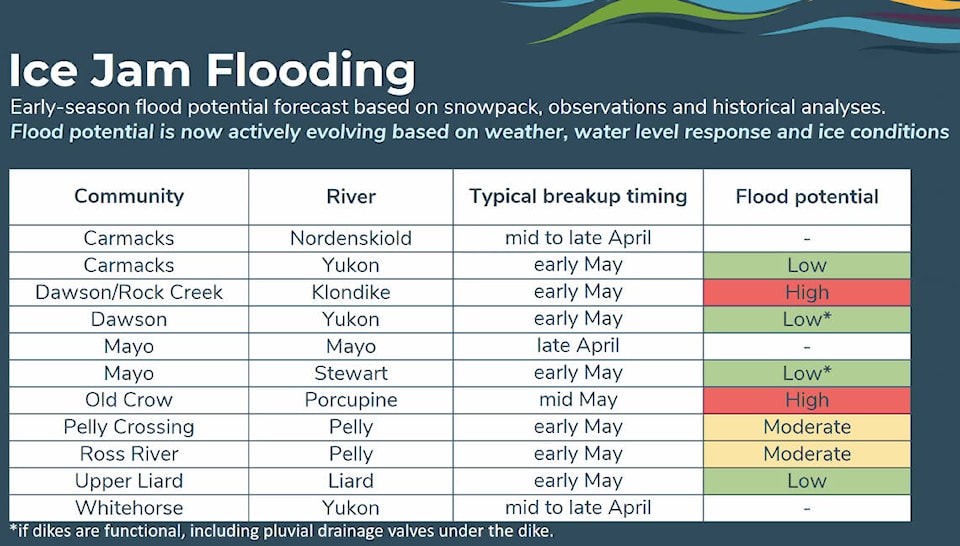Yukon government officials say the possibility of fast snow melt throughout the territory could result in flooding in many areas.
Officials held a media briefing May 3 with Holly Goulding, a senior hydrologist with the territory; Mike Smith, chief meteorologist with Wildland Fire Management; and Danielle Trudeau, director of the government’s emergency measures organization (EMO).
Smith noted temperatures throughout the territory are expected to be about the same or cooler than normal through the next two weeks and potentially over the coming months, a situation that could mean snow melt is delayed.
The record snowpack in eight of 11 watersheds in the territory was also highlighted, with Goulding pointing out it could lead to flooding if there’s a quick melt and breakup of the territory’s waterways is shorter than usual.
“Breakup is a really dynamic event,” Goulding said.
She went on to highlight the impact of snowmelt and spring ice breakup happening at the same time.
“When we have all of that volume of water moving through the river system, it could overwhelm river channels and generate flooding,” she said, noting the middle of May to end of June is critical.
Officials are keeping a close watch particularly in the Klondike region as well as near Old Crow at this time, with Carmacks, Teslin, Upper Liard, Ross River and Pelly Crossing also listed as areas of concern.
“We’ll be watching levels really closely, and that’s when communities will need to be watching really closely to be able to respond to what rivers are [doing],” she said.
Trudeau emphasized the work that happens between EMO and other government departments to ensure communities and individuals are prepared for emergency situations.
She noted meetings with municipalities, First Nations and partners are happening with efforts also underway to do an inventory of field equipment available. As of yet, no major gaps have been found.
Residents are advised to keep in mind the risks of where they’re living and have a 72-hour emergency kit prepared and a plan in place should they need to evacuate.
Officials also highlighted that this week marks emergency preparedness week in the territory with a number of events planned that will highlight the importance of preparing for an emergency.
Contact Stephanie Waddell at stephanie.waddell@yukon-news.com
